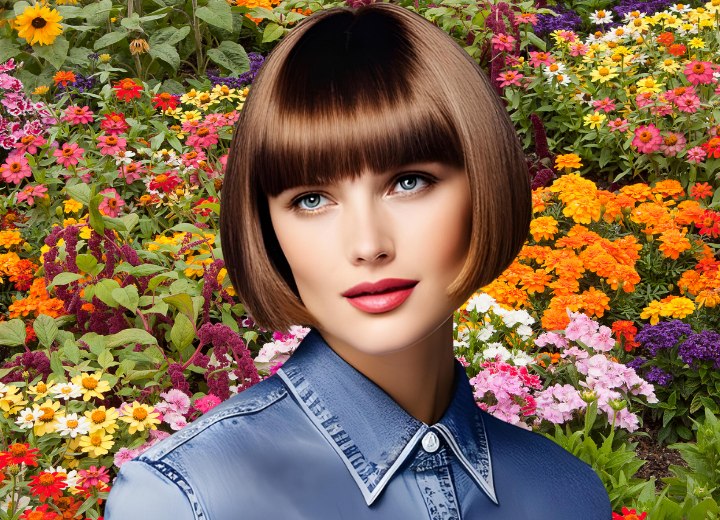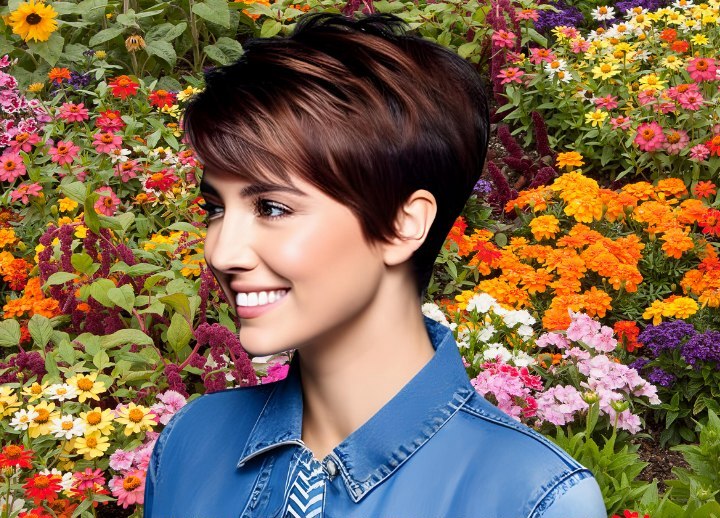Hair Length and Sustainability

Q: I had a discussion with my partner about what is most sustainable and least damaging to nature: long hair or short hair. We found a lot of different arguments for different hair lengths and still don't know which is the best. What is your opinion about this?
A: Some people might be surprised, but the length of your hair can actually have an impact on the environment and the discussion about whether long hair or short hair is more sustainable is an intriguing one. Just to be clear: when we discuss the sustainability of hair length, we're discussing which length is the most eco-friendly and can be maintained without causing harm or causing the least amount of harm.
It might seem like common sense that shorter hair would be more sustainable, but it's not that straightforward. You see, hair is actually biodegradable. That means it can decompose naturally in the environment. So, whether your hair is long or short, it's not going to remain in nature for centuries like some other materials.
Additionally, the volume of hair clippings produced, for example over the course of one year, by long hair and short hair will be comparable, even if the size of the clippings is different. Someone with long hair may need fewer haircuts than someone with short hair, but the amount of hair cut during each haircut will be more substantial. Alternatively, someone with shorter hair may need to get haircuts more often, but the amount of hair cut (shorter hair clippings) during each hair salon visit will be less.

But there are other factors to think about. For instance, longer hair might need more shampoo and conditioner, which means more plastic bottles and more water usage. However, shorter hair might require more frequent haircuts, which means more trips to the hairdresser and more energy consumption.
Then there's the issue of hair coloring. Whether you're going blonde, red, or brown, or black, hair dye can have a pretty big effect on the environment. The chemicals used in hair dye can be detrimental to aquatic life if they end up in our waterways. And the production of hair dye can also generate a lot of waste. So, the less hair we have to dye, the less impact we're having on the environment.
So, what does all of this mean for our hair length discussion? Well, let's analyze it for you:
Long Hair
Pros:
• Can be styled up or in a ponytail, reducing the need for washing and styling.
• Requires fewer haircuts, which means fewer trips to the hair salon and less energy use.
Cons:
• Needs more shampoo and conditioner, which means more production and more plastic bottles.
• Needs more water to wash.
• Takes longer to dry, which means more energy consumption if a hair dryer is used.
• May require more hair dye, which can have a bigger environmental impact.

Short Hair
Pros:
• Needs less shampoo and conditioner, resulting in less production and fewer plastic bottles.
• Requires less water to wash.
• Takes less time to dry, which means less energy use if you're using a hair dryer.
• Can be styled quickly and easily, reducing the need for heat styling.
• Requires less dye if you color your hair.
Cons:
• Requires more frequent haircuts, necessitating more trips to the salon and more energy consumption.
As you can see, both long and short hair have their advantages and disadvantages when it comes to sustainability. However, if we're looking for the most eco-friendly option, it might be a tie between a short bob and a pixie cut.
A short bob is short enough that it requires less shampoo and conditioner than long hair. Additionally, it doesn't require as many haircuts as a pixie cut, which means fewer trips to the salon. If your hair is currently long, a short bob is a less drastic change than a pixie cut, which may make it easier to make the decision to go eco-friendly short.
A pixie cut is even shorter than a bob, which means it requires even less shampoo and conditioner. However, it does require more frequent haircuts, which means more energy usage. If your hair is currently long, it takes a lot of courage to get a pixie cut. On the other hand, you can make a statement by trading in your long hair for an environmentally friendly pixie cut.

The decision of whether to wear your hair long or short is a personal one, but for some people it might also be important to consider the sustainability of this choice. We don't want to make any judgments about whether long or short hair is preferable, but only about the potential effect it could have on the environment. In addition to sustainability, there are many other elements that can determine a hairstyle choice.
So, to answer your question, our opinion is that if you really want to contribute to the environment, you should go for a short bob or a pixie cut. A fashionable bowl cut could also be an interesting choice. Your ears are still covered, albeit just barely, but you can reap most of the environmental benefits of a pixie cut.
©Hairfinder.com Images: AI illustrations
See also: Eco-friendly hair products